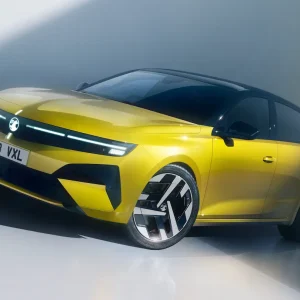Leasing firm Ogilvie Fleet has ceased offering the Mercedes C350e plug-in hybrid to its employees due to what the firm described as poor real-world running costs and because certain versions are ineligible for the Government plug-in car grant.
“We’ve withdrawn the Mercedes C350e from our system for people in the Ogilvie group because of hugely misleading whole-life costs,” said business support director Andy Stephen.
“We had a lot of interest in it – it’s got a published combined figure of 134.5mpg – but we had one on demo for a week and one guy charged it at his house on a three-point plug, so it wasn’t charged as much as you might like, but he was getting between 35mpg and 48mpg. It’s pretty stark, the contrast between that and the published figure – and the trouble is the published one is what you base your [whole-life cost] figures on.”
Stephen claimed the bigger problem is that models fitted with 18-inch wheels do not qualify for the latest version of the Government plug-in car grant, which is often overlooked.
“That vehicle should, under most circumstances, qualify for the new tiered plug-in car grant, because vehicles under 50g/km of CO2 that can travel more than 10 miles on electric get £2500 [off their list price].
“If the CO2 goes above 50g/km, and we had missed this initially, the range must be 20 miles or above. These saloons have an EV range of 19 miles and CO2 of 48g/km. If you stick 18-inch alloys on it, that puts the CO2 over 50g/km, which means it drops into a tier below and you’ve just added £2500 to your capital cost.”
In response, Mercedes issued BusinessCar with the following statement: “The Mercedes-Benz C350e comes as standard with 17-inch wheels which ensure that it is eligible for the Government’s plug-in grant. The C350e is also designed to be charged regularly in order to achieve the best possible performance.
“When optional 18-inch wheels are fitted, the CO2 emissions are 52g/km – as indicated in the brochure.”
Stephen added that it was difficult to calculate costs for plug-in hybrids and the firm often advised clients against running them, due to the discrepancy between published and real-world figures.
“Generally, we tell people not to include plug-in hybrids on a policy that’s dictated by whole-life cost – and we always tell people to look at whole-life cost. You’ve got published figures in the region of 150mpg and that totally skews your whole-life cost analysis.”
“While plug-in vehicles have their benefits, any organisation considering running one must look beyond the claimed fuel economy figures and at their usage profile,” said British Vehicle Rental and Leasing Association chief executive Gerry Keaney. “They are at their most efficient when they can be used in electric mode, and if a company car driver is going to be on the motorway travelling long distances, the fuel savings may not be as substantial as the company had hoped.”





